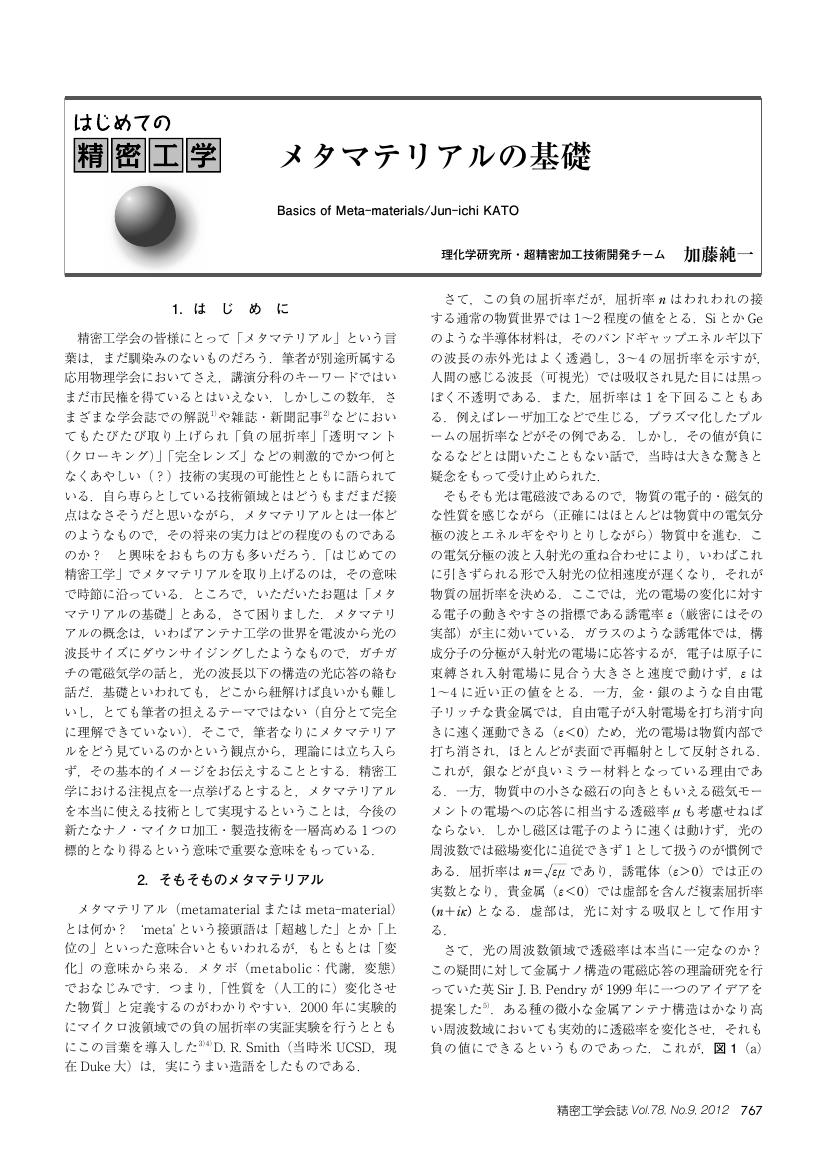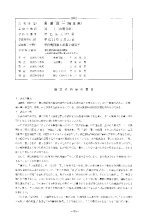7 0 0 0 OA 素肌剣術期における新陰柳生流の勢法に関する研究―介者剣術期からの変容とその発展―
- 著者
- 加藤 純一
- 出版者
- 日本武道学会
- 雑誌
- 武道学研究 (ISSN:02879700)
- 巻号頁・発行日
- vol.22, no.3, pp.23-32, 1990-03-31 (Released:2012-11-27)
- 参考文献数
- 22
The SHINKAGE-YAGYU-RYU (one of the Kendo Schools) was founded by Muneyoshi YAGYU who had been influenced by Hidetsuna KAMIIZUMI (SHINKAGE-RYU). In the early 17th century, this school was succeeded by Toshitoshi YAGYU who was the Muneyosi's grandson. He had been to the Higo (Kumamoto district) and had met Kiyomasa KATO in 1603. He had been able to know the national situation, so he founded the original style of SHINKAGE-YAGU-RYU when he went back to the Yagyu (Nara district) again. Furthermore, his son Toshikane YAGYU, who was influenced by his father started to change the KATA (form)in this school.The porpose of this study is to clarify the change of KATA from Muneyoshi to Toshitoshi, Toshikane. The findings are as follows.1. As Toshitoshi denied his father's KATA, he founded the new style called “TSUTTATTAR U-MI-KAMAE”which was a form of changing one's weight from legs to waist.2. Although Muneyoshi didn't write down the mental things in letters, Toshitoshi started to write down these things. (for example, BOUSHIN, KI, the sound of wind and water)3. Toshikane changed the system of learning the KATA in this school, and after that he established the phased method of teaching.4. He contrived the “GASSHI-UCHI” which didn't exist before. Although this technique was an actual fighting, it was rater considered a technique to practice mental elements.
4 0 0 0 OA メタマテリアルの基礎
- 著者
- 加藤 純一
- 出版者
- 公益社団法人 精密工学会
- 雑誌
- 精密工学会誌 (ISSN:09120289)
- 巻号頁・発行日
- vol.78, no.9, pp.767-772, 2012-09-05 (Released:2013-03-05)
- 参考文献数
- 24
- 被引用文献数
- 3
4 0 0 0 IR 柳生新陰流の総合的研究 : 心法と技法の統一を中心として
4 0 0 0 OA 新陰柳生流形成期に見られる勢法に関する研究
- 著者
- 加藤 純一
- 出版者
- 日本武道学会
- 雑誌
- 武道学研究 (ISSN:02879700)
- 巻号頁・発行日
- vol.21, no.3, pp.32-40, 1989-03-25 (Released:2012-11-27)
- 参考文献数
- 29
Kata (form) has been of extreme significance in Ryuha (school) from the birth of martial arts. This is because it is the essence of a situation which is a matter of victory and defeat, or life and death. For this reason, I have been studying the Shinkage-Yagyu-Ryu in Owari during the Tokugawa era. I especially studied its early stage.In this paper, I studied books on the martial arts to see how Kata are passed on in the Ryu. The summary is as follows;1. Muneyoshi YAGYU set up Shinkage-Yagyu-Ryu on the basis of Kata which Hidetsuna KAMIIZUMI had brought into Shinkage-Ryu.2. Muneyoshi not only implemented Hidetsuna's Kata as they were but also put in new Kata or removed several of them. These modifications show how he added his own personality to the original Kata.3. Muto-dori (the way of taking an enemy's sword) is one of his originals, it is a secret of Shinkage-Yagyu-Ryu. The process of making up the Muto-dori is as follows; Hakka-hissyo→Marobashi→Muto-dori. Such a sequence means that both mind and body act in union to perform Muto-dori.
3 0 0 0 OA 韓国における剣道試合の有効打突判定に関する一考察
- 著者
- 加藤 純一
- 出版者
- 日本武道学会
- 雑誌
- 武道学研究 (ISSN:02879700)
- 巻号頁・発行日
- vol.45, no.1, pp.1-21, 2012-09-20 (Released:2014-04-04)
- 参考文献数
- 19
The purpose of this study is to look at the decisions on yuko-datotsu being made through the system of "Claim for Judgment Using VTR" that the Korea Business Kumdo Federation (KBKF) has introduced. This thesis is organized as follows:·Details leading up to the introduction of "Claim for Judgment Using VTR".·Clarification of its regulations and subsidiary.·Analysis of the assessment of decisions made using a video tape recorder (VTR).·The relation between decisions made using the VTR and the requirements of yuko-datotsu.The results obtained were as follow:1.Before the introduction of the "Claim for Judgment Using VTR," systems using 5 referees and 4 referees were investigated.2.The system of "Claim for Judgment Using VTR" was accepted by all concerned.3.In case kantoku has a doubt about the yuko-datotsu, kantoku may file igi with shinpan-shunin in this system.4.Judges check the datotsu-bui of the opponent’s kendo-gu or datotsubu with shinai using the VTR. This method bears some parallels to the instant replay system that many professional sports have adopted.5.But if they move to checking not only datotsubu or datotsu-bui, but also checking the yuko-datotsu, the requirement of yuko-datotsu will be changed by the introduction of this system.
1 0 0 0 OA Ananda M. Chakrabarty博士の逝去を悼む
- 著者
- 加藤 純一 金原 和秀
- 出版者
- NPO法人 環境バイオテクノロジー学会
- 雑誌
- 環境バイオテクノロジー学会誌 (ISSN:13471856)
- 巻号頁・発行日
- vol.21, no.1, pp.3, 2021 (Released:2022-04-15)
1 0 0 0 OA 台湾鹿港の地域づくりにおける龍山寺の役割と可能性 : 寺廟文化を活かした地域づくりの方法
- 著者
- 黄 世輝 田中 みなみ 三橋 俊雄 加藤 純一郎 宮崎 清
- 出版者
- 一般社団法人 日本デザイン学会
- 雑誌
- デザイン学研究 (ISSN:09108173)
- 巻号頁・発行日
- vol.43, no.6, pp.51-60, 1997-03-31 (Released:2017-07-25)
- 参考文献数
- 18
台湾の寺廟文化は、中国大陸から渡来した漢民族による移民社会の成立とともに、地域生活と密接な関係を保ちながら発達してきた。本研究では、台湾・鹿港の文化的、社会的象徴といえる龍山寺を対象に、地域づくりにかかわる龍山寺の役割とその可能性について検討した。その結果、鹿港の地域づくりにかかわる龍山寺のあり方について、以下に示す五つの方向性について提示した。1)宗教活動の場として清浄な環境を保ちながら仏教教義の広がりに努める。2)教育の場として歴史的資産を保護、伝承しながら郷土教育を推進する。3)文化活動の場として住民参加型の文芸活動を展開する。4)観光活動の場として龍山寺の文化的価値を内外に発信する。5)憩い・交流の場として寺廟文化の情報センターの役割を担う。総じて、龍山寺は地域づくりの拠点として多くの住民が参加できる活動を展開することができる。
1 0 0 0 赤外位相シフト・デジタルホログラフィによる3次元計測
本研究の目的は、可視域ほど良い結像素子のない赤外域で良好な3次元像を結像素子を使わないデジタルホログラフィによって形成し、さらに位相の再生機能による干渉計測や顕微鏡機能の実現を図ることにある。まず広い範囲の可視光の3波長(He-Cdレーザー、636nm,537nm,441nm)を使い、位相シフトホログラフィによりカラー像の再生に成功した。この場合、ピエゾ鏡の移動によって与えられる位相シフト量は、中央の波長に対しては正しいが両端の波長では誤差を生じる。その影響をコンピューターシミュレーションにより見積もった結果、大きな影響のないことがわかった。再生における二種類のアルゴリズムの適用条件と像の違いを明らかにした。また移相板と偏光子を組み合わせたachromatic phase shifterを使って、この位相シフト誤差を解消した実験を行ない、良好な再生像を得ることができた。赤外の実験で波長830nm、出力30mWの半導体レーザーを使って、点物体、拡散物体、および位相物体の再生に成功した。位相の再生機能を利用して、鏡面や水面の形状を簡単な光学系で定量的に計測することができた。また拡散面の場合には、物体照射の角度の変更または物体の変形の前後に対する再生位相の差を取って、表面形状や変位分布を633nmのレーザーを使い、それぞれ10μm、10nmの感度で測定できた。結像レンズを導入した物体サイズの拡大も行なった。以上の結果から位相シフトデジタルホログラフィを赤外域に適用することによって良好な3次元像が得られ、可視光に対して不透明なシリコン結晶や生体の3次元計測への応用の見通しが立った。
1 0 0 0 OA 『兵法家傳書』
- 著者
- 加藤 純一
- 出版者
- 目白大学
- 雑誌
- 目白大学人文学研究 (ISSN:13495186)
- 巻号頁・発行日
- vol.2, pp.15-28, 2005
本稿では、柳生宗矩著『兵法家伝書』の「殺人刀 上巻」に「右之両条は兵法の病気をさると云心特にあて用る事也」とコメントが付されている「僧問吉徳如何是道。古徳答日平常心是道」と「木人如對花鳥」の2つの話頭、並びにその上位概念に位置付けられる「中峯和尚云、具放心心」について論述する。先の2つの話順には「病気をさると云心特にあて用る」とあることからも、「着した心」を払拭し常なる心でいることの重要性が説かれたものと言え、後者は武芸者が求道した究極の心のあり方を表したものとして把握できる。そこで、本稿では宗矩が説く「具放心心(放心心を具せよ)」に至るための心の在り方を段階的に考察し、宗矩が把捉した兵法者の心のあり方について明確にしようとした。特に、「具放心心」の読解においては、柳生宗矩が「法の師」と仰いだ沢庵の『不動智神妙録』に展開する「求其放心」「心要放」「覓放心」といった用語との比較を通して、段階的に展開する兵法者の心の有り様を明らかにした。生命の危機を常に背負っていた武士だからこそ、実戦より導き出された己れの心法輪が展開でき、それをまた技法と融合させることにより更なる深化をはかることができたと考えられる。本稿が対象とした宗矩の心身(身心)観は、この「殺人刀 上巻」を総括する役割を果たしていると同時に、後段の「活人剣 下唇」や、それに併設されている「無刀之巻」への布石とも理解できる。つまり、『兵法家伝書』における柳生宗矩の心身(身心)観を論じる上で、非常に重要な役割を担う個所であり、その意味においても本稿における心の分析は重要な意味を持つと考える。本稿で用いたテキストは、天理大学図書館所蔵の『兵法家伝書』が掲載されている加藤純一『兵法家伝書に学ぶ』(日本武道館)である。同類の書では渡辺一郎校注『兵法家伝書』(岩波文庫)があるが、その凡例にもあるように、手軽で読みやすく修正がなされたものとして加筆されている。また、同氏には日本思想大系『近世芸道論』(岩波書店)所収『兵法家伝書』もあるが、こちらは「江戸柳生家本(東京都柳生宗久氏蔵)をできるだけもとの姿を残すように翻刻した」ものであり、現在、原本と整合することのできない資料となっている。以上により、本稿においては小城鍋島家本(天理図書館蔵)を翻刻、それを掲載した『兵法家伝書に学ぶ』を用いることにした。なお、本稿で引用した個所は筆者の判断により忠実にハングルに翻訳した。また、その個所が明らかになるよう引用頁を明記した。本来であれば引用した原文を注に記載すべきであるが、今回は頁数の関係でそれを省略したことを付言しておく。


